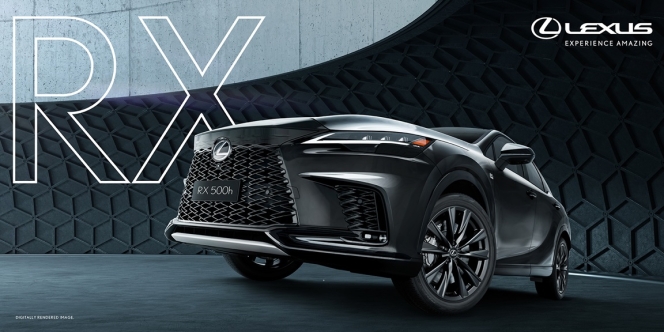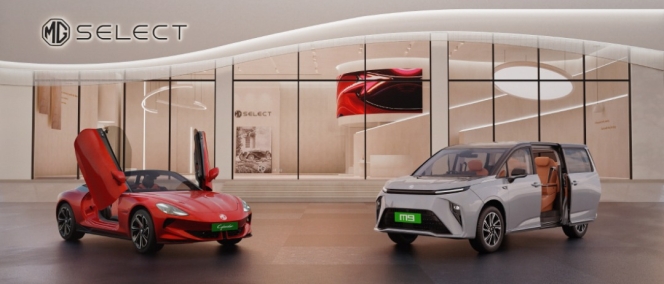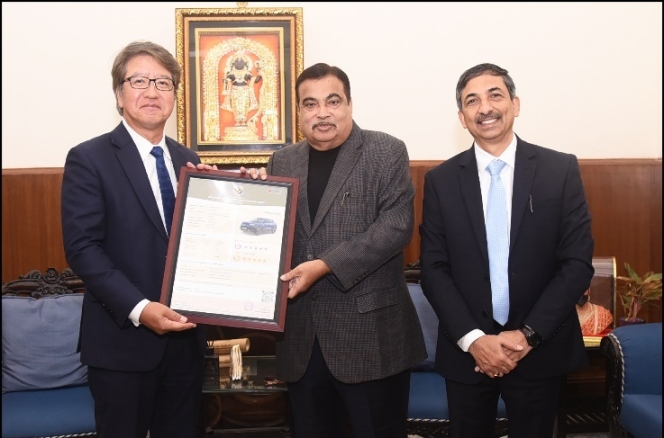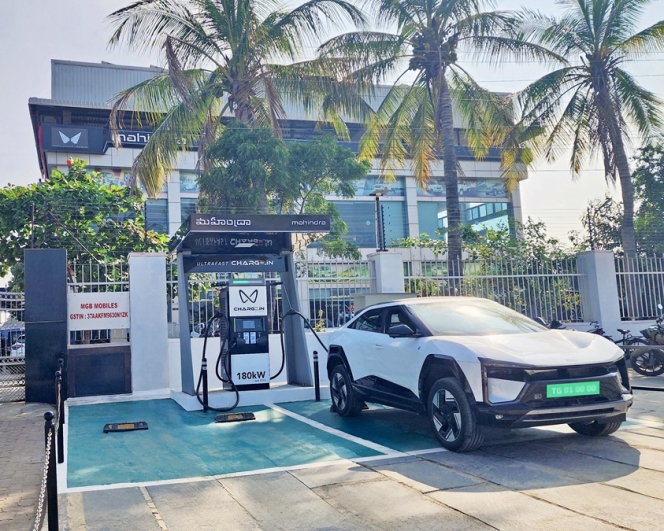Trends: Executive Sedans
- By Venkatesh P Koushik
- August 12, 2021

The year was 2000. The first two Completely Built Units (CBU) of Skoda Octavia landed in India and rushed to Aurangabad where the Volkswagen Group company would eventually set up a modern manufacturing facility. A confident Imran Hassan, as the head of the Czech company in India, looked keen to drill the fact that his Octavia was a car with a Czech badge but actually German in its quality – build and almost all of that it had to offer. A precursor of a segment that would pull buyers big time, the Octavia was official launched a year later in 2001. It was the same year that the Honda Accord was launched, albeit at a higher price point. The Hyundai Sonata too hit the market soon. The Honda Civic arrived in 2005, whereas the Toyota Corolla in 2003. The Hyundai Elantra arrived at round the same time. With SUVs yet to be the rage, these aspirational ‘executive’ sedans soon defined a new standard in the Indian auto industry. They came to occupy what would be termed as the C+ or D-segment. Forming an upper crest of sedans that were status and lifestyle-oriented, the two segment cars drew large sales volumes. The Octavia sold an estimated 8,000 units in 2005. A year before, in 2004, Honda Siel Cars sold 2,977 Accords. It cornered an enviable market share of 40 percent in its segment, an increase of 69 percent over 2003.
 Between 2001 and 2010, the ‘executive’ sedan segment continued to be the ‘force’ with good sales. The introduction of new models like the Toyota Corolla and Honda Civic helped. The launch of large SUVs like the Hyundai Terracan, Ford Endeavour and Honda CR-V in the same time span did not create much ruffle as these were priced higher and were out of reach of many. It was with the launch of the Toyota Fortuner in 2009 that the SUV segment began gaining some serious muscle. By then, the D-segment had seen a good amount of shake and tumble. New additions included the Volkswagen Jetta and Passat. By 2011, the segment comprised the Toyota Corolla, Skoda Octavia, Honda Civic, Volkswagen Jetta, Hyundai Sonata Embera, Chevrolet Cruze and a few others. Crowded it became, and with an amount of fanfare to boast of. It turned out to be a segment that every manufacturer wanted a pie of. This, despite the SUV rage catching on since 2012 as the Ford EcoSport and Renault Duster arrived on the scene.
Between 2001 and 2010, the ‘executive’ sedan segment continued to be the ‘force’ with good sales. The introduction of new models like the Toyota Corolla and Honda Civic helped. The launch of large SUVs like the Hyundai Terracan, Ford Endeavour and Honda CR-V in the same time span did not create much ruffle as these were priced higher and were out of reach of many. It was with the launch of the Toyota Fortuner in 2009 that the SUV segment began gaining some serious muscle. By then, the D-segment had seen a good amount of shake and tumble. New additions included the Volkswagen Jetta and Passat. By 2011, the segment comprised the Toyota Corolla, Skoda Octavia, Honda Civic, Volkswagen Jetta, Hyundai Sonata Embera, Chevrolet Cruze and a few others. Crowded it became, and with an amount of fanfare to boast of. It turned out to be a segment that every manufacturer wanted a pie of. This, despite the SUV rage catching on since 2012 as the Ford EcoSport and Renault Duster arrived on the scene.
Vehicle buyers in India were suddenly exposed to a wider scheme of things; they were in fact torn between choosing an aspirational sedan or an SUV. The D-segment cars soldiered on with fair numbers to talk home about, albeit the likes of Civic and Octavia and not the Accord and the Sonata. On muted sales volumes, Honda discontinued the Accord in 2013. In May 2013, only 24 units of the ‘executive’ sedan were sold as compared to the sale of 68 CR-Vs. The Toyota Corolla sold 368 units in May 2013 as compared to the sale of 353 numbers in the month before. The Volkswagen Jetta sold 266 numbers in May 2013, and the Passat, 141 numbers. The Octavia, renamed as the Laura, sold 305 units in May 2013 as compared to the sale of 126 units in April 2013.
 The near six-car D-segment has shrunk to a lone warrior in 2021. With the latest generation Honda Civic launched and quietly discontinued, the only car that seems to make up the segment today is the new Skoda Octavia. In the absence of Toyota Corolla, the only other car in the segment to give company to the Octavia is the Hyundai Elantra. Its numbers are anything to write home about today. The new Octavia has been priced uncomfortably close to the Superb with a starting price of INR 26 lakh. When it was first introduced in 2001, it was priced at no more than INR 10 lakh.
The near six-car D-segment has shrunk to a lone warrior in 2021. With the latest generation Honda Civic launched and quietly discontinued, the only car that seems to make up the segment today is the new Skoda Octavia. In the absence of Toyota Corolla, the only other car in the segment to give company to the Octavia is the Hyundai Elantra. Its numbers are anything to write home about today. The new Octavia has been priced uncomfortably close to the Superb with a starting price of INR 26 lakh. When it was first introduced in 2001, it was priced at no more than INR 10 lakh.
The executive sedan dilemma
 If the Renault Duster should be credited to create some serious pull towards SUVs in India starting from 2012, today, it is the segments containing SUVs that are the most crowded. The clues of how the D-segment has shrunk to include just the Elantra or the Octavia (the new Octavia actually looks to have moved up and beyond the reach of this segment ironically) may be found in the proliferation of the SUVs at various levels – right from the Ford EcoSport level to the Toyota Fortuner level (where SUVs assume a serious form and function, complete with a 4WD system). A segment that did an estimated 10,000 units in 2005 has come down to a few hundred units in 2021. In January 2021, 32 units of the Elantra were sold. Eight units of the Octavia were sold. The Superb sold 239 units in the same month! Comprising cars that measure over 4.5m in length and are powered by engines with a displacement capacity of between 1800 cc and 2000 cc, the D-segment contenders have been priced between INR 15 lakh and INR 25 lakh.
If the Renault Duster should be credited to create some serious pull towards SUVs in India starting from 2012, today, it is the segments containing SUVs that are the most crowded. The clues of how the D-segment has shrunk to include just the Elantra or the Octavia (the new Octavia actually looks to have moved up and beyond the reach of this segment ironically) may be found in the proliferation of the SUVs at various levels – right from the Ford EcoSport level to the Toyota Fortuner level (where SUVs assume a serious form and function, complete with a 4WD system). A segment that did an estimated 10,000 units in 2005 has come down to a few hundred units in 2021. In January 2021, 32 units of the Elantra were sold. Eight units of the Octavia were sold. The Superb sold 239 units in the same month! Comprising cars that measure over 4.5m in length and are powered by engines with a displacement capacity of between 1800 cc and 2000 cc, the D-segment contenders have been priced between INR 15 lakh and INR 25 lakh.
 Sitting above the C-segment, which consists of cars like the Maruti Ciaz and the Hyundai Verna, the D-segment cars have always been about status, comfort, features and performance. They are therefore about lower sales volumes and high production costs, making them difficult to pursue by many automakers. Proving to be a segment that has been tough to crack for many OEMs, the ones to taste immense success have been Skoda and Toyota with their Octavia and Corolla, respectively. With sales shrinking to become a fraction of that of the SUVs, and even not being as strong during their peak, the D-segment is a study that should reveal the time travel of the Indian passenger vehicle space. Affected extensively by the proliferation of SUVs at various price points, the D-segment is all but gone. The recent figures by SIAM indicating that SUV acceptance has increased steadily, and has grown to be more than the total sales of sedans and hatchbacks combined in the April-June quarter of 2021, the D-segment, it is clear, has shrunk drastically. With the B-SUVs (like Maruti Suzuki Brezza, Hyundai Venue, Tata Nexon) eating into the C-sedan segment and the larger C-SUVs (like KIA Seltos, Tata Harrier, Hyundai Creta) taking a pie out of the D-sedan segment, what was once considered as the most coveted has now been relegated to soldier on with much difficulty.
Sitting above the C-segment, which consists of cars like the Maruti Ciaz and the Hyundai Verna, the D-segment cars have always been about status, comfort, features and performance. They are therefore about lower sales volumes and high production costs, making them difficult to pursue by many automakers. Proving to be a segment that has been tough to crack for many OEMs, the ones to taste immense success have been Skoda and Toyota with their Octavia and Corolla, respectively. With sales shrinking to become a fraction of that of the SUVs, and even not being as strong during their peak, the D-segment is a study that should reveal the time travel of the Indian passenger vehicle space. Affected extensively by the proliferation of SUVs at various price points, the D-segment is all but gone. The recent figures by SIAM indicating that SUV acceptance has increased steadily, and has grown to be more than the total sales of sedans and hatchbacks combined in the April-June quarter of 2021, the D-segment, it is clear, has shrunk drastically. With the B-SUVs (like Maruti Suzuki Brezza, Hyundai Venue, Tata Nexon) eating into the C-sedan segment and the larger C-SUVs (like KIA Seltos, Tata Harrier, Hyundai Creta) taking a pie out of the D-sedan segment, what was once considered as the most coveted has now been relegated to soldier on with much difficulty.
 With India refusing to shift from being a price sensitive market, and with a certain purchasing power equation always present, the growth in SUVs that come at desirable price points with an aspirational value to talk about, the D-segment, it may be an exaggeration to say is on its last legs. Undercutting sedans when it comes to pricing, SUVs are proving to be the ruthless D-segment killers. Presenting a strong perception regarding ‘value for money’, it is they that are providing no chance for even the existing D-segment contenders to have much leeway. They may be world-class and highly regarded the world over, but the D-segment cars like the Skoda Octavia and Hyundai Elantra look like they are up against a wall. Made from Completely Knocked Down (CKD) kits that are weighed by the cost versus volume considerations, the D-segment cars that exist suffer from a significant cost disadvantage. Add low demand, and it is not surprising for Skoda to position the new Octavia within rubbing distance of the Superb in terms of price and features. Such is it that those looking for ventilated seats could go for the Superb and those not needing them could for the Octavia!
With India refusing to shift from being a price sensitive market, and with a certain purchasing power equation always present, the growth in SUVs that come at desirable price points with an aspirational value to talk about, the D-segment, it may be an exaggeration to say is on its last legs. Undercutting sedans when it comes to pricing, SUVs are proving to be the ruthless D-segment killers. Presenting a strong perception regarding ‘value for money’, it is they that are providing no chance for even the existing D-segment contenders to have much leeway. They may be world-class and highly regarded the world over, but the D-segment cars like the Skoda Octavia and Hyundai Elantra look like they are up against a wall. Made from Completely Knocked Down (CKD) kits that are weighed by the cost versus volume considerations, the D-segment cars that exist suffer from a significant cost disadvantage. Add low demand, and it is not surprising for Skoda to position the new Octavia within rubbing distance of the Superb in terms of price and features. Such is it that those looking for ventilated seats could go for the Superb and those not needing them could for the Octavia!
With such fine differentiation defining the current crop of vehicles that make up the D-segment, a big shake down does not seem far away. It could be driven by regulations and market requirements for certain. Already dissuading many OEMs to drop their D-segment offering, regulations like BS VI have indeed been a big factor. The other has been the availability of SUVs at price points that correspond with D-segment sedans. A big plus concerning SUVs is the status and lifestyle image they present. The other is their ability to travel over rough terrain and provide good visibility due to the high seating position. Providing a sense of invincibility, SUVs seem to offer more than a D-segment sedan could, today. At the top, it has increasingly come under pressure from luxury sedans and other offerings from brands like Audi, Mercedes-Benz and BMW. Some of the entry-level products from these OEMs don’t cost a premium. Owning used luxury cars has also become easy as their volumes have risen. This too has put pressure on the existence of the D-segment without any doubt. W ith the Octavia taking a position within close proximity to the Superb, the future of D-segment, at best, looks tough. This, even with the talk of the new Elantra being introduced gaining force with every passing day. Unless Hyundai unleashes the Elantra with some novel trick up its sleeve, there’s not much left to talk about the once glorious D-segment. (MT)

Lexus India Launches New RX350h Exquisite Grade At INR 8.99 Million
- By MT Bureau
- December 03, 2025

Japanese luxury brand Lexus India has introduced a new ‘Exquisite’ grade to its RX 350h line-up, strengthening the model’s presence in the luxury SUV segment.
The new RX 350h Exquisite grade starts at INR 8.99 million (ex-showroom), which goes up to INR 10.09 million (ex-showroom).
The RX 350h Exquisite grade features Lexus’ hybrid system, which combines a highly efficient 2.5-litre inline 4-cylinder engine and high-output motor. It includes a bipolar nickel-metal hydride battery with enhanced performance. On the inside, it gets 10-way power adjusted front seats, heated and ventilated seating for front & rear seats and ambient lighting.
The RX 500h F-SPORT grade is the only Performance Hybrid Electric Turbocharged Luxury SUV in India. The 2.4 L-T HEV on the RX 500h features a front unit integrating a 2.4-L turbocharged engine, motor, a 6-speed automatic transmission and an eAxle with a built-in high output motor driving the rear wheels. The RX 500h features Dynamic Rear-Wheel Steering and DIRECT4 technology for acceleration.
The RX features a Mark Levinson 21-speaker audio system and offers Lexus Safety System+ with Dynamic Radar Cruise Control, Cross Traffic Alert and Safe Exit Assist with Blind Spot Monitor.
Between January and November this year, the RX model recorded 12 percent growth, reflecting rising demand for luxury SUVs in the country. During the same period, SUVs contributed about 40 percent to Lexus India’s overall performance, underscoring the RX’s pivotal role in driving the brand’s momentum.
Hikaru Ikeuchi, President, Lexus India, said, ‘The Lexus RX represents our dedication to luxury, design, performance, and sustainable mobility. As the luxury SUV segment continues to grow, the introduction of the new Exquisite grade allows us to offer guests a wider range of options and features to choose from. This enhancement reflects our continued commitment to expanding our portfolio and elevating the Lexus experience in India, supported by advanced technology and a guest-first philosophy.”
MG SELECT Crosses 1,000 Sales And 15 Experience Centres
- By MT Bureau
- December 03, 2025

JSW MG Motor India has announced that its luxury retail channel, MG SELECT, has crossed a triple milestone: reaching 1,000-unit sales, inaugurating its 15th Experience Centre and maintaining the second position in India’s luxury EV market.
The network now encompasses 15 Experience Centres across 14 cities in India, reinforcing the brand's commitment to delivering an exclusive automotive retail journey. The recent inauguration of the 15th store in Jaipur further underscores the brand's ambition to redefine luxury mobility.
The milestone also highlighted sustained market demand for the select portfolio and is a key driver behind the brand’s 32 percent YTD growth in 2025.
The company claimed that the MG Cyberster, India's highest-selling sports car, has a 4–5 month waiting period, and the MG M9 - Presidential Limousine shows strong momentum in the luxury MPV segment. The MG Cyberster is available at an ex-showroom price of INR 7.49 million, while the MG M9 is available at an ex-showroom price of INR 6.99 million.
Anurag Mehrotra, Managing Director, JSW MG Motor India, said, "Our rise to become the second largest luxury EV brand in the country speaks to a singular belief. True luxury is felt in every touchpoint when precision, ambition and care move together. Through MG SELECT we have crafted an ownership world where innovation meets desire and where every interaction feels intentional. We are shaping the next era of electric mobility for India’s most discerning customers, with a commitment that is both bold and deeply personal.”
The MG SELECT Experience Centres are spaces for the brand's flagship vehicles. These venues provide an immersive, gallery-like setting, ensuring the display of these models is the focal point of the customer interaction. The Jaipur showroom, located at Tonk Road near Sanganer Flyover, exemplifies the MG SELECT philosophy of ‘Reimagining Luxury’, featuring spacious, serene, and technologically advanced environments that elevate the car buying journey.
Maruti Suzuki e Vitara Gets 5-Star Bharat NCAP Safety Rating
- By MT Bureau
- December 02, 2025

Maruti Suzuki India has been awarded a 5-star Bharat NCAP safety rating for its e Vitara, marking a moment for the company's electric vehicle strategy.
The e Vitara is built on Suzuki’s Heartect-e platform designed for electric vehicles to deliver strength, structural rigidity and advanced high voltage protection. The ‘Made-in-India, Made-for-the-World’ e Vitara is designed and tested for temperature conditions across the world, ensuring performance from as high as 60deg Celsius to as low as -30deg Celsius. The model is offered with 49 kWh and 61 kWh battery options.
Nitin Gadkari, Minister of Road Transport and Highways of India, said, “Congratulations to Maruti Suzuki for achieving 5-star Bharat NCAP in both adult and child occupant protection for their e Vitara. I am especially glad that Maruti Suzuki has shown real leadership in providing 7 airbags as a standard across all variants of the e Vitara.”
Hisashi Takeuchi, Managing Director & CEO, Maruti Suzuki India, said, “The 5-star Bharat NCAP rating for e Vitara, our first Battery Electric Vehicle, is a moment of immense pride for all of us at Maruti Suzuki. Using the Bharat NCAP 5-star rating, we will export the e Vitara to more than 100 countries of the world. Bharat NCAP’s globally benchmarked stringent vehicle test protocols have been a catalyst in empowering customers to make informed decisions. I thank the Minister Gadkari, the officials in his Ministry and test agencies for their rigorous efforts and commitment in shaping India’s journey towards safe mobility.”
The e VITARA’s body structure uses more than 60 percent ultra-high tensile and high-tensile strength steel. Its battery protection system incorporates a structural design with an energy-absorbing battery pack mounting structure.
Key safety features include 7 standard airbags (including the Driver's knee airbag), Level 2 ADAS (Automatic Emergency Braking, Lane Keep Assist, Adaptive Cruise Control), Hill Hold Control, ABS with EBD and Brake Assist, Electronic Stability Program (ESP) and a 360-degree Surround View Camera.
Mahindra Launches First Dealership-Based Ultrafast EV Charger In Anantapur
- By MT Bureau
- December 02, 2025

Mahindra has marked a major milestone in its nationwide electric vehicle (EV) infrastructure expansion with the inauguration of its first dealership-based ultrafast charger – a 180 kW Charge_IN station.
This is the first of many such installations planned across Mahindra dealerships, forming a key pillar of the company’s commitment to building India’s ultrafast charging network.
This initiative scales up Mahindra’s Charge_IN ecosystem, complementing the 250 highway fast-charging stations already announced. The new 180 kW ultrafast chargers will enable EV users to charge quickly and conveniently at strategically located dealerships across the country, with 24x7 on-ground support.






Comments (0)
ADD COMMENT